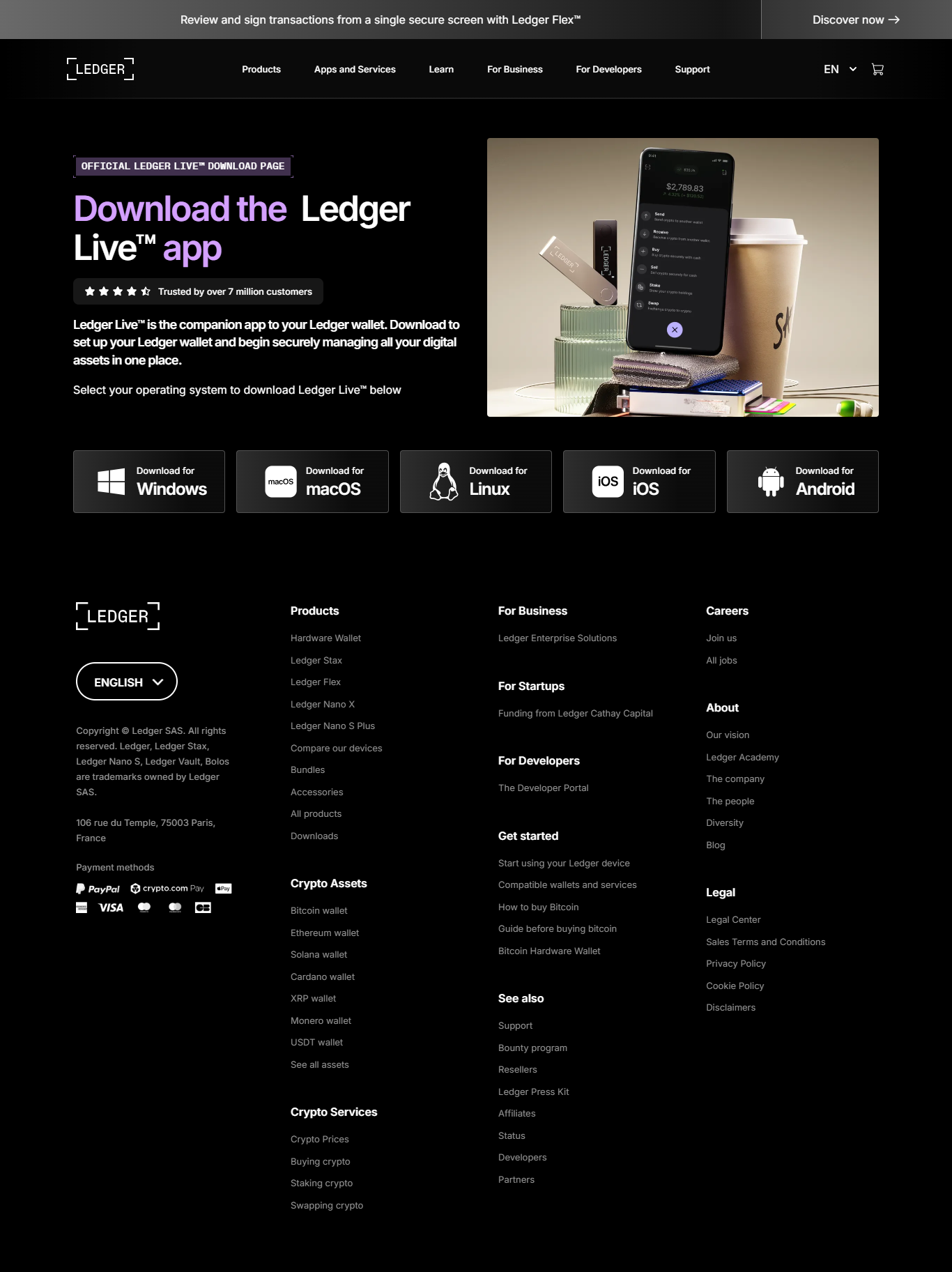Why use a Ledger hardware wallet?
A hardware wallet stores your private keys offline in a dedicated device — separate from your computer or phone. This is the strongest practical protection against online threats like malware, phishing, and remote attackers. Whether you’re buying crypto, collecting NFTs, or building a DeFi portfolio, Ledger helps keep your assets under your control.
Key benefits
- Private keys never leave the device — transactions are signed on-device.
- Works with popular wallets and services (Ledger Live, MetaMask, WalletConnect-ready apps).
- Recovery options: secure seed phrase backup and passphrase support if you choose.
- Regular firmware updates to stay protected against new threats.
What you’ll need
- A Ledger device — model Nano S Plus or Nano X are recommended for most users.
- A computer or smartphone with a USB-C cable (or Bluetooth for Nano X) and a modern browser for Ledger Live web or the mobile app.
- Secure place to write down and store your 24-word recovery phrase — preferably offline and in multiple copies.
- Time — about 10–20 minutes to complete first-time setup and learn the basics.
Step-by-step: First-time setup
-
Unbox & power on.
Unpack your Ledger device and connect it to your computer or phone. Follow on-screen prompts to choose a PIN. Choose a PIN you can remember but is not easily guessable; never store your PIN in plain text online.
-
Write down your recovery phrase.
The device will display a 24-word recovery phrase. Write these words down in order on the provided recovery sheet and keep it in a safe, separate place. This phrase is the only backup of your crypto — anyone with it can access your funds.
-
Install Ledger Live.
Ledger Live is the official companion app for managing your accounts and firmware updates. Download Ledger Live from the official website and follow prompts to add accounts for Bitcoin, Ethereum, and other supported coins.
-
Install apps and add accounts.
Using Ledger Live, install the coin-specific apps (e.g., Bitcoin, Ethereum) onto your device. Then add an account for each cryptocurrency you want to manage — Ledger Live will show balances and let you send/receive funds securely.
-
Test with a small transaction.
Before moving larger sums, send a small test amount to and from your Ledger-managed account to verify everything is working as expected.
Security best practices
Security is about layers. Combine a secure device with safe habits to reduce risk.
- Never share your 24-word recovery phrase with anyone — Ledger staff will never ask for it.
- Only download Ledger Live from the official Ledger website.
- Verify transaction details on the device screen before approving — never trust the host computer to show correct details.
- Consider a passphrase (25th word) for an additional hidden account if you need more separation or deniability.
- Store backup copies of your recovery phrase in physically separate locations (e.g., safe deposit box, home safe).
Common social engineering attacks
Scammers may use fake websites, phone support, or phishing emails pretending to be Ledger. If something asks for your seed phrase, PIN, or asks you to install unknown software — stop. Treat any unsolicited communication as suspicious.
Troubleshooting
Most issues are resolvable quickly. Try the following before contacting support.
- Device not recognized: try a different cable or USB port, and make sure the device is unlocked.
- Ledger Live warnings: ensure you downloaded the official release and that firmware is up to date.
- Forgot PIN: device will reset — you can restore using your 24-word recovery phrase. This is why storing the phrase safely is critical.
- Transaction missing: check the blockchain explorer for your coin using the transaction ID; ensure the network (e.g., Ethereum vs. Polygon) was correct when sending.
Advanced topics
When you’re comfortable with basics, explore these advanced features:
- Passphrase-protected wallets: add an additional secret (passphrase) to create hidden wallets.
- Third-party integrations: use your Ledger with MetaMask, DeFi dashboards, or coin-specific wallets. Always confirm addresses on the device.
- Enterprise & multisig: Ledger devices can be used as signing devices in multisig setups and institutional workflows.
Glossary (quick)
- Private key
- The secret numeric key that proves ownership of crypto. Stored safely on your device.
- Seed / recovery phrase
- 24 words that can recreate your private keys. Keep them offline and secure.
- Firmware
- Device software — keep it updated for security fixes.
